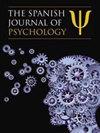西班牙冠状病毒爆发期间的混乱情绪:内心情绪、描述性感觉规则和社会运动惯例
IF 1.8
4区 心理学
Q1 PSYCHOLOGY
引用次数: 0
摘要
摘要对于建构主义来说,语言是情感事件分析的不同层面之间的纽带,从个体到人际和宏观社会。这些情绪水平之间的互动使我们能够理解一个情绪事件,并用一个情绪词来标记它,与他人感知到的情绪相协调,并将事件作为一个社会来表现。在两项研究中,我们发现了所经历的内心情绪(个人层面)、他人感知的情绪(描述性感觉规则、人际层面)和互联网上共享的情绪(社会情绪惯例、宏观社会层面)之间的异同,所有这些情绪目标都集中在2019冠状病毒病的爆发上。研究结果表明,新冠肺炎-19在社会中的情绪含义与描述性感觉规则相似,而报告的内心情绪则明显不同:快乐在人际和宏观社会层面上无关紧要,但在个人层面上显然很重要。恐惧和希望也出现了不匹配。虽然在大多数阶段,恐惧是人际和宏观社会层面上最主要的情绪,但在个人层面上适度占主导地位。希望遵循相反的模式,在个人层面上是最相关的情绪,但在人际和宏观社会层面上则不那么相关。每一个层面都可能产生不同的后果:个人层面的混合情绪可能会提高韧性;在其他人身上感知到的恐惧可能会激发保护行为;圣诞节期间与社会分享的悲伤可能会产生更大的同理心。这些结果支持了情感概念的复杂性以及在不同分析水平上探索它们的适宜性。本文章由计算机程序翻译,如有差异,请以英文原文为准。
Disentangling Emotions during the Coronavirus Outbreak in Spain: Inner Emotions, Descriptive Feeling Rules and Socioemotional Conventions
Abstract For constructionism, language is the link among different levels of analysis of emotional events, from individual to interpersonal and macrosocial. The interaction among these emotional levels allows us to construe an emotional episode and label it with an emotion word, coordinate with the emotions perceived in others, and represent events as a society. Across two studies, we found similarities and differences among inner emotions experienced (individual level), emotions perceived in others (descriptive feeling rules, interpersonal level) and emotions shared on the internet (socioemotional conventions, macrosocial level), with all these emotional targets focused on the COVID–19 outbreak. The results indicate a similarity between the emotional meaning of COVID–19 in society and the descriptive feeling rules, whereas the reported inner emotions were clearly distinct: Joy was irrelevant at the interpersonal and macrosocial levels but clearly important at the individual level. A mismatch also appeared for fear and hope. While fear was the most predominant emotion at the interpersonal and macrosocial levels during most of the phases, it was moderately predominant at the individual level. Hope followed the opposite pattern, being the most relevant emotion at the individual level but less relevant at the interpersonal and macrosocial levels. Each level might have different consequences: Mixed emotions at the individual level might promote resilience; fear perceived in other people might motivate protective behaviors; and sadness socially shared during Christmas might generate greater empathy. These results support the complexity of emotional concepts and the suitability of exploring them at different levels of analysis.
求助全文
通过发布文献求助,成功后即可免费获取论文全文。
去求助
来源期刊

Spanish Journal of Psychology
Arts and Humanities-Language and Linguistics
CiteScore
3.60
自引率
0.00%
发文量
44
期刊介绍:
The Spanish Journal of Psychology is published with the aim of promoting the international dissemination of relevant empirical research and theoretical and methodological proposals in the various areas of specialization within psychology.
The first Spanish journal with an international scope published entirely in English.
 求助内容:
求助内容: 应助结果提醒方式:
应助结果提醒方式:


